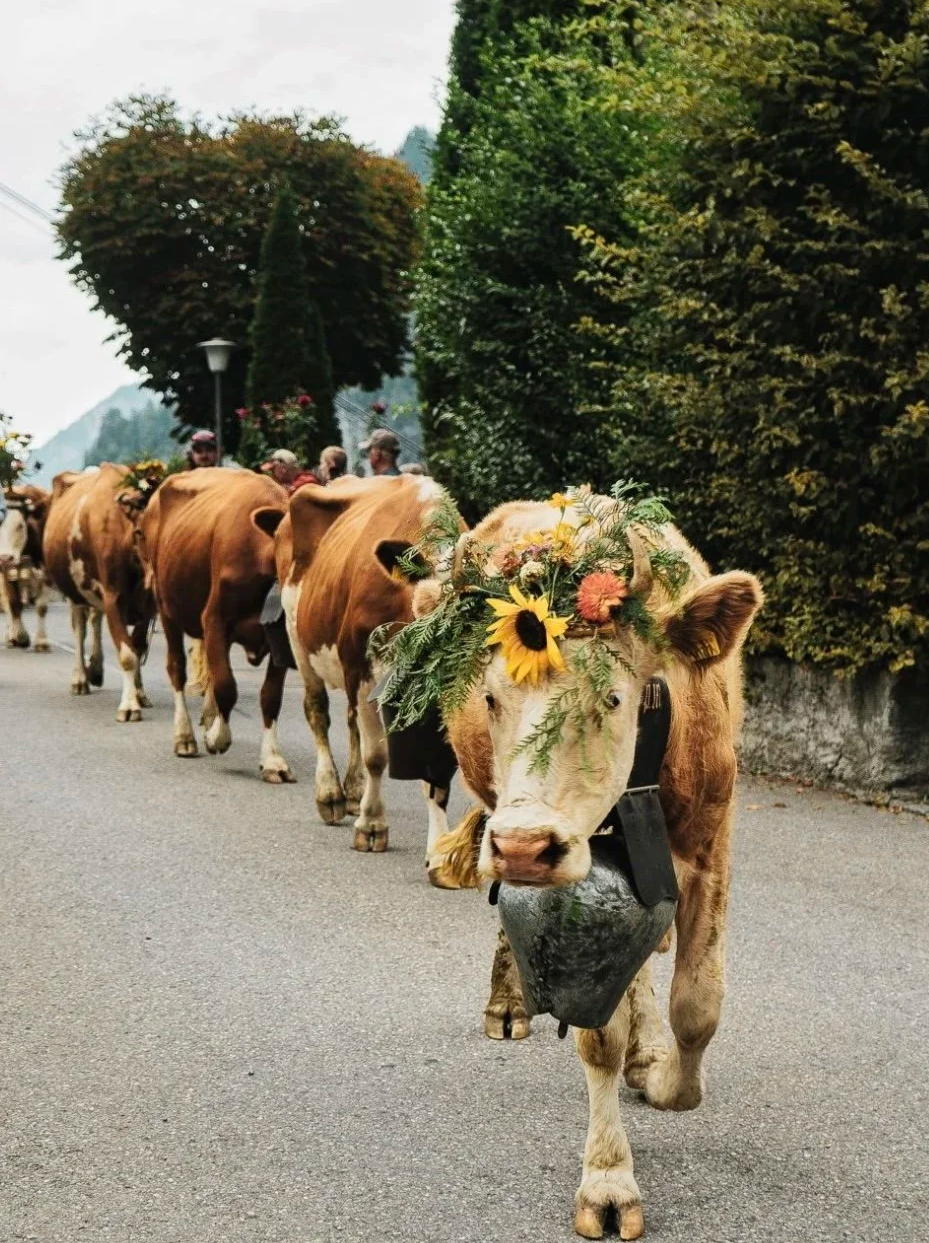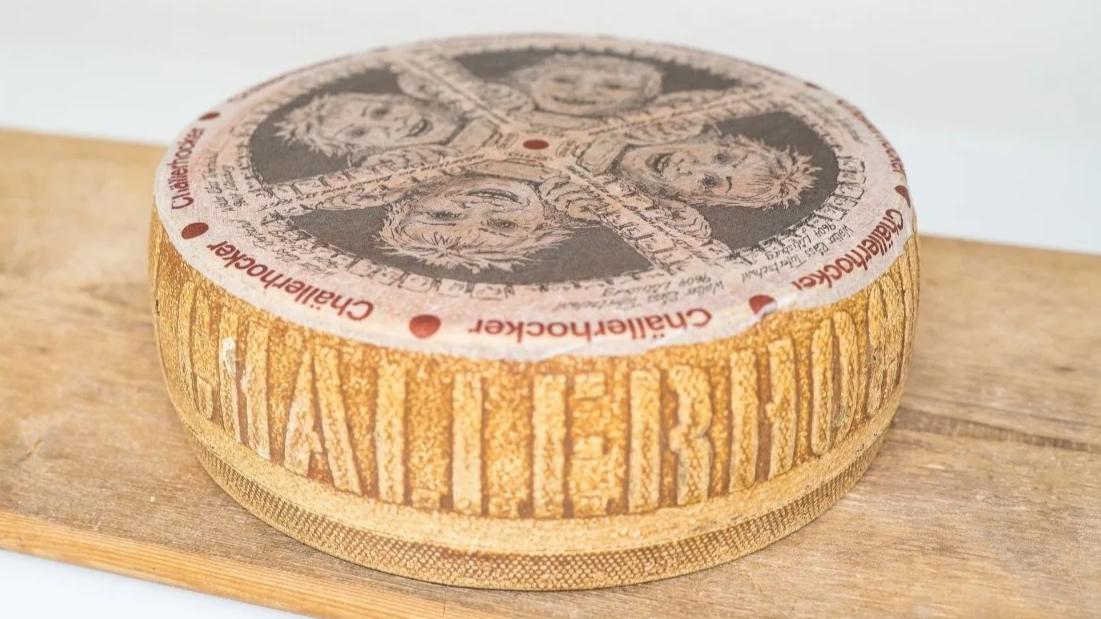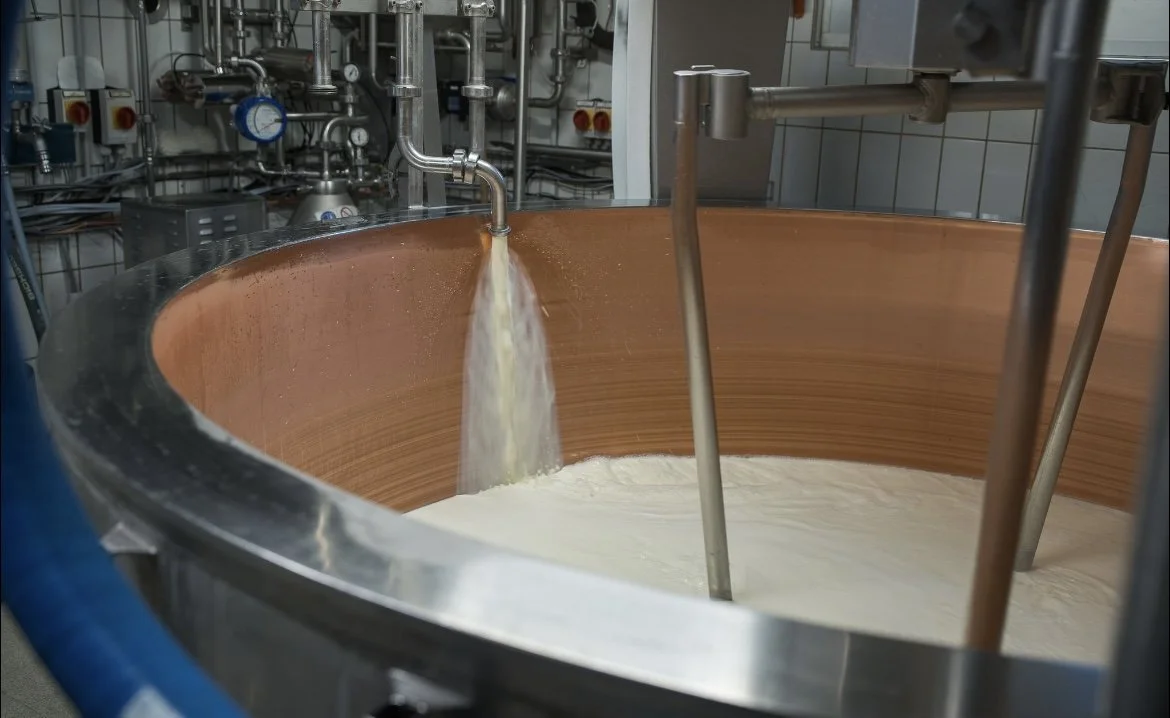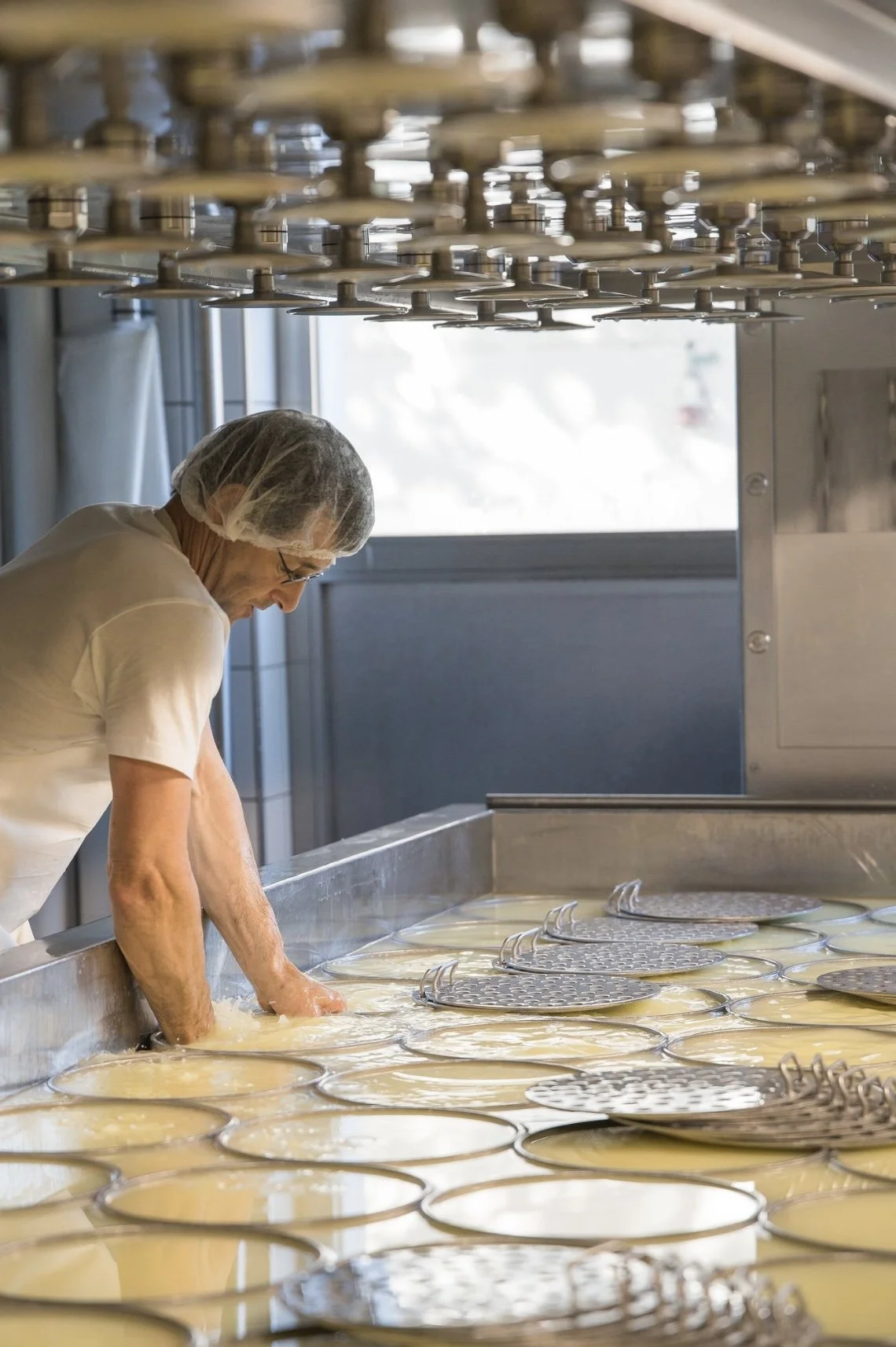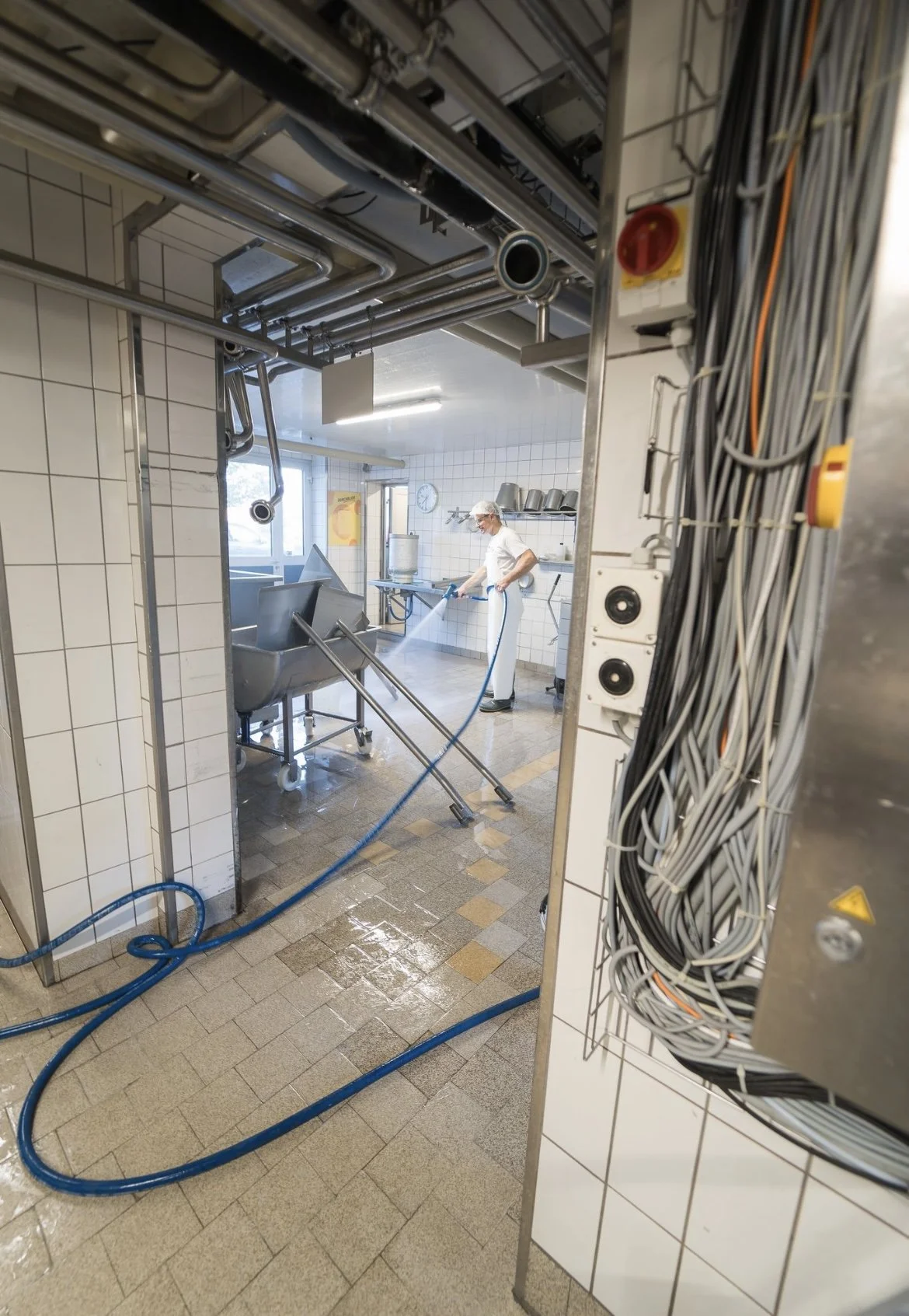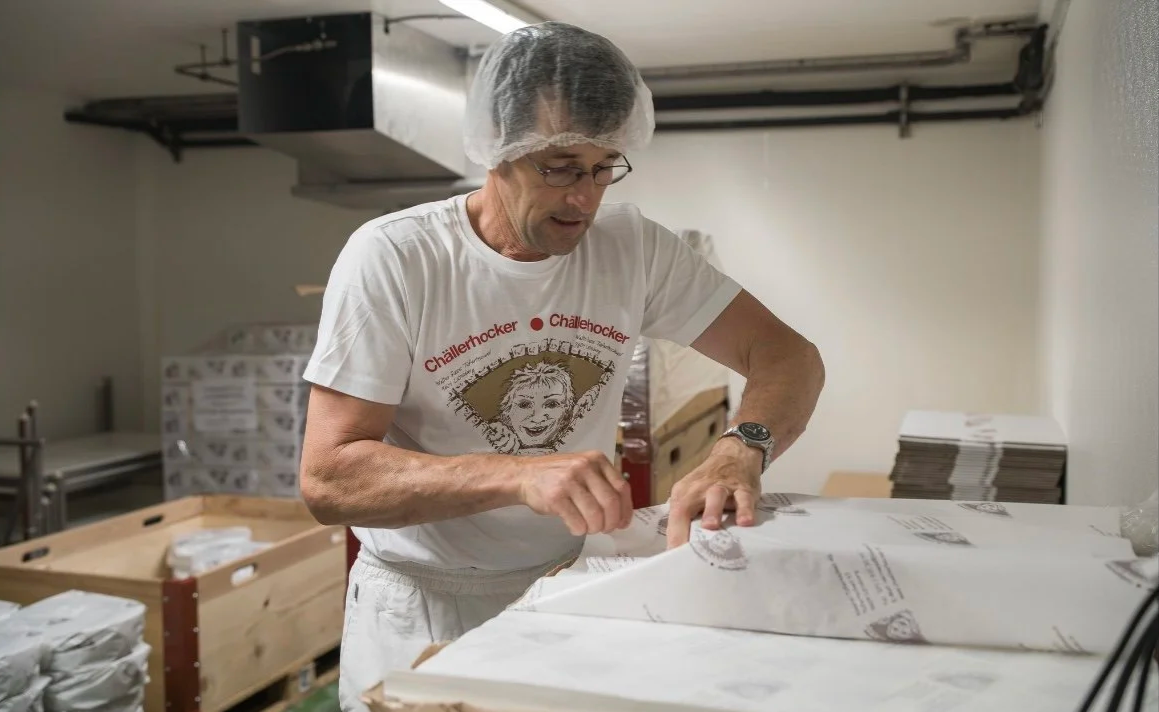Switzerland’s lesser-known cheeses
After visiting the Käseswiss shop in Bermondsey - part of a Swiss cheese importing company with a sister business in Switzerland, and having a wonderful conversation with the owner, Rachael, I came away feeling full of knowledge and excited to share what I’d learnt about Swiss cheese, especially one in particular: Chällerhocker.
This week I hosted a Swiss cheese and wine tasting and was able to share some of the stories Rachael had shared with me. I began by showing photos of the cows coming down from the mountains - a perfect starting point, since at this time of year (mid-September to early October) the farmers lead their herds down, dressed in traditional costume, while the cows wear beautiful flower garlands around their necks.
Swiss Parade - swisssage.com
When spring arrives and the snow melts, it’s time to walk the cows back up into the mountains, a tradition known as transhumance. Cheesemakers and their families take their herds to the high summer chalets, and it’s there that they produce true Alpine cheese - cheese literally made in the Alps. It’s a centuries-old tradition and remains physically demanding work to this day.
One cheese I wanted to dive into in more detail is Chällerhocker, because it has such an amusing and unusual story behind its branding. Rachael shared some beautiful photos that I’d love to include.
Chällerhocker is made by Walter Räss in north-eastern Switzerland, in the region where Appenzeller originates, but further east. Before 1990, the Swiss government tightly controlled cheesemaking, deciding which dairies could produce which cheeses. Cheesemakers had little freedom to experiment. In 1989, when the government stepped back from regulating the Swiss dairy association, cheesemakers were finally able to create their own recipes. Walter, who had previously made Appenzeller, seized the chance to craft a cheese of his own, complete with his own name and label - and there Chällerhocker was born.
It’s often described as nutty, with notes of caramel, fudge, or caramelised onion, and it melts beautifully.
Walter Räss with his wife Annelies Räss-Huser outisde their dairy
Where does the name come from? And the drawing?
Chällerhocker means “sitting in the cellar” in Swiss German. Walter asked an architect friend to design a label showing a little boy emerging from a cheese cave to announce that the cheese was “ready.” That word ready is important, because Walter is committed to only selling his cheese once it’s matured for 10 months. He believes this is the perfect age and has never wavered from that promise.
There’s also a funny story that Walter loves to recount: one day, a little boy walked past his dairy, spotted the label, and asked: “is that a zombie?” From then on, the odd name and the quirky illustration became part of the cheese’s charm. That playful aspect helped Chällerhocker stand out in a cheesemonger’s otherwise dominated by more traditional, “serious” European labels.
Walter choosing his cheeses at the ideal 10 months old
The little boy between the wheels of cheese announcing “it’s ready!”
A few notes on Swiss cheesemaking
In Switzerland, cheesemaking remains deeply local. The milk always comes from farmers right in the immediate area of the dairy, delivered by hand twice a day. Herds are small, 20 to 25 cows is typical and cheesemakers work closely with farmers to ensure quality. Farmers take real pride in supplying good milk, and there’s a strong commitment to feeding cows only grass and hay.
Milk delivery in traditional urns - I love this one!
Milk going into the vat
The whey being drained out in the moulds
There’s always a lot of cleaning involved post-make
Kaserei Tufertschwil - the village dairy
Carefully packaged for our consumption :) p.s. don’t you love the uniform?
Cheesemaking in Switzerland is also a serious trade: most cheesemakers undergo long apprenticeships and formal study, and there’s an established Guild that plays an important role. Very few people enter the profession without that training. The result is exceptional milk quality, real expertise in production, and a strong sense of tradition.
In Switzerland, tradition is huge, and sometimes that means the cheese scene can feel a little bit narrow, like there isn’t much space for new ideas. But there are definitely some fun exceptions. For example, Arnaud Guichard (he’s a Master of Cheese) makes Tomme Fleurette, which is this gorgeous double-cream cheese, and Dzorette, a semi-soft, mould-ripened cheese. There’s also the lovely team at JUMI, who are always experimenting with unusual flavours and textures. So it’s not just about those big, hard, nutty Alpine cheeses- there’s actually a lot more variety than people realise.
Big thanks to Rachael at Kaseswiss who provided me with excellent cheese, stories, and photos.
